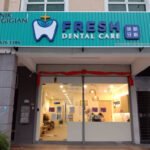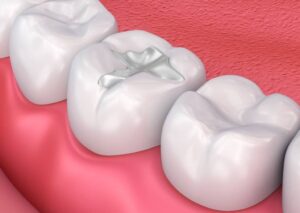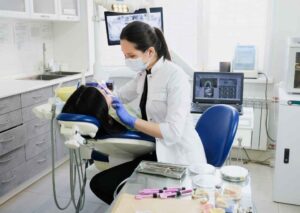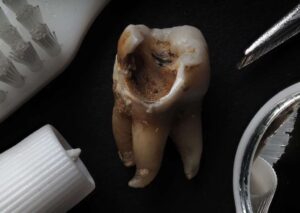Most people benefit from getting braces between the ages of 10 to 14—when the jaw is still growing, and teeth can be guided into position more easily. However, adults can also get braces with excellent results. Whether you’re a parent exploring orthodontic options for your child or considering it for yourself, understanding the right timing can make the whole process smoother, faster, and often more affordable.
If you’re considering orthodontic care in Kuala Lumpur, you can explore options for braces at Fresh Dental Care. Our experienced team offers personalised solutions for both kids and adults, tailored to your dental needs and budget.
Signs You May Need Braces as an Adult

Braces aren’t just for teenagers. In fact, many adults only start noticing problems with their teeth alignment or bite in their 30s and beyond. If you’ve been wondering whether it’s time to speak to an orthodontist, here are key signs that may indicate braces could help:
1. Crowded or Crooked Teeth
If your teeth overlap, twist, or push against each other, that’s a strong sign you may benefit from braces. Crowding can make it harder to clean between teeth, leading to a higher risk of cavities, tartar buildup, and gum disease.
2. Gaps Between Teeth
Spacing issues aren’t just cosmetic. Large gaps can allow food particles to get trapped more easily, increasing the risk of gum inflammation or periodontal issues. Braces or aligners can gently close these gaps over time.
3. Bite Problems (Overbite, Underbite, Crossbite)
If your upper and lower teeth don’t align properly when you bite down, this could lead to jaw pain, uneven tooth wear, or even headaches. Braces can realign your bite to improve comfort and function.
4. Shifting Teeth
Have you noticed your teeth moving or becoming misaligned as you age? This can be caused by gum recession, tooth loss, or bone loss. If you wore braces in the past and your teeth have shifted back, a second round of orthodontic treatment might be necessary.
5. Difficulty Flossing or Brushing
If it’s hard to slide floss between certain teeth or reach certain areas with your toothbrush, your alignment may be off. Braces can help space your teeth more evenly, making oral hygiene easier and more effective.
When Is the Best Time to Get Braces as an Adult?

The best time to get braces as an adult is as soon as you notice alignment issues, bite problems, or feel self-conscious about your smile. There’s no fixed “perfect age” once you’re past adolescence – the ideal time is whenever you’re ready to improve your oral health and aesthetics.
Your Teeth Can Be Moved at Any Age
Contrary to popular belief, age isn’t a limiting factor for orthodontic treatment. Adult teeth move just as predictably as teenage teeth when guided by braces or aligners. The key is ensuring your gums and bone structure are healthy enough to support movement.
Timing Matters for Long-Term Dental Health
Delaying braces could lead to more complex issues over time. Crowded teeth are harder to clean, increasing the risk of cavities and gum disease. Misaligned bites can cause jaw strain, headaches, and even uneven tooth wear. Addressing these issues earlier prevents costly dental problems later in life.
Planning Around Major Life Events
While orthodontic treatment is more comfortable and discreet than ever, it still requires time and discipline. Many adults choose to begin during relatively stable periods – avoiding times of travel, wedding planning, or major professional commitments. That said, clear aligners like Invisalign can offer more flexibility.
You’re Never Too Old for a Straighter Smile
Whether you’re in your 20s or late 50s, it’s never too late to align your teeth. In fact, many adults pursue braces not just for health, but for a confidence boost in social or professional settings. Some even do it alongside other treatments like scaling and polishing to fully refresh their oral wellness.
How Long After Getting Braces Can You Eat Normal Food?
Immediately after getting your braces, you’ll need to adjust your diet for a few days. Here’s what to expect:
First 3-5 Days: Stick to Soft Foods
Your mouth will likely feel sore from the pressure of the braces. Soft foods like yogurt, mashed potatoes, soup, and smoothies are your best bet. Avoid crunchy or sticky food that can dislodge brackets.
After 1 Week: Gradual Return to Normal Diet
Once your mouth adapts, you can begin reintroducing firmer foods. That said, steer clear of hard snacks like nuts, popcorn, or hard candy throughout the treatment period – they can damage the brackets or wires.
Long-Term Food Habits
You’ll develop a rhythm of eating mindfully. Cut fruits into small pieces, avoid biting directly into hard items like apples or corn on the cob, and rinse or brush after meals to prevent plaque buildup.
What Do You Need to Do Before Getting Braces?

Getting braces isn’t just about straightening teeth – it’s a structured medical process. If you’re considering orthodontic treatment as an adult, it’s important to understand the preparation needed beforehand. Here’s what to expect and how to prepare:
1. Schedule a Full Dental Assessment
The first step is to book a complete consultation with a qualified orthodontist. At Fresh Dental Clinic, we begin with a full evaluation of your teeth, gums, and jaw alignment. This helps us determine if you’re a suitable candidate for braces and which type will work best for your case.
This session usually includes:
- A physical oral exam
- Dental X-rays or 3D scans
- A review of your bite and jaw structure
These diagnostics are critical to tailor a treatment plan that works with your current dental health.
2. Address Any Existing Dental Issues First
Before you can begin the process of getting braces, all underlying oral health issues need to be treated. This includes:
- Cavities or decay
- Gum disease
- Impacted or missing teeth
- Severe plaque or tartar buildup
Braces work best on healthy teeth and gums. Skipping this step could delay your treatment or lead to complications during your orthodontic journey.
3. Understand the Process and Commitment
Braces are not a quick fix – the process can take anywhere from 12 to 36 months, depending on your dental structure and age. Your orthodontist will outline:
- How often you’ll need adjustment appointments
- What types of food to avoid
- How to maintain oral hygiene during treatment
For adults, lifestyle and work commitments can influence your decision. That’s why we help you choose a treatment that fits around your daily routine.
4. Discuss Your Aesthetic Preferences
Some adults prefer discreet options like ceramic braces or Invisalign instead of traditional metal braces. During your consultation, we’ll help you weigh the pros and cons of each type. If appearance is a concern (especially for professionals or public-facing roles), this step is essential.
Want to know more about the types of braces available? Visit our page right now !
5. Plan for Costs and Instalments
You’ll receive a treatment estimate and breakdown of all costs involved. If you’re worried about finances, we offer monthly payment plans to make braces more affordable without compromising on care.
Also, keep in mind that your treatment may include retainers after braces and follow-up appointments, which should be factored into your overall plan.
Frequently Asked Questions
What types of braces are best for adults?
Adults usually prefer ceramic braces or Invisalign because they’re more discreet. Metal braces remain a popular option for their durability and affordability. During your consultation, we’ll help you choose based on your needs, budget, and lifestyle.
How do I clean my teeth with braces on?
Use an orthodontic toothbrush, floss daily with special floss threaders or interdental brushes, and rinse with mouthwash. Good hygiene is essential to avoid stains, decay, or gum disease during your braces journey.
Will my braces affect my speech?
You might notice a slight lisp for the first few days, especially with Invisalign or lingual braces. Most people adapt quickly and speak normally within a week or two.
Is it painful to get braces as an adult?
Getting braces fitted isn’t painful, but you might feel pressure or soreness for a few days after each adjustment. Over-the-counter pain relief and cold compresses usually help.
Book Your Adult Braces Consultation Today with Fresh Dental Care Kepong
Whether you’re fixing bite problems or simply want a straighter, more confident smile, adult braces are more common than ever—and it’s never too late to start.
At Fresh Dental Care Kepong, we specialise in adult orthodontics and offer a full range of options from metal to ceramic to clear aligners. Our team provides personalised care, flexible payment plans, and honest guidance tailored to your goals.
Whatsapp Us to schedule a no-pressure consultation. Let’s build your dream smile—comfortably, confidently, and affordably.





